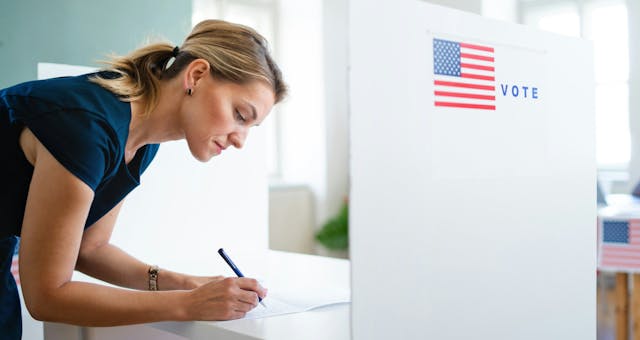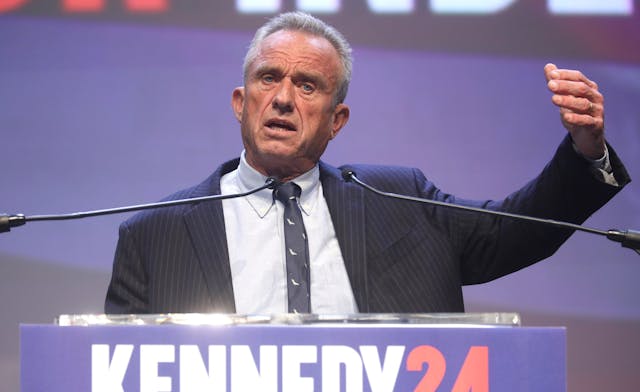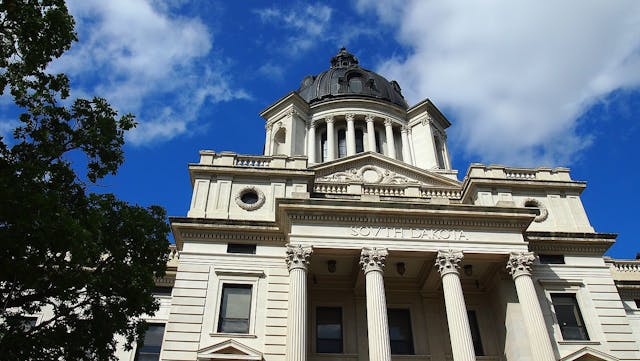The Coming Independent Majority

There are more self-identified Independents in the United States today than there have been at any point in the last seventy years. This is just one of the findings from the Pew Research Center's annual American Values survey, published last week. The main thrust of the study reinforces a well-known basic fact of our contemporary political environment: the Democratic and Republican parties are growing ever more polarized across a wider array of issues. Indeed, considering the results of the annual values survey over the course of the last twenty-five years, Pew reports that the “values gap” between Republicans and Democrats now effectively trumps all major demographic differences among the American public.
“Unlike in 1987, when this series of surveys began, the values gap between Republicans and Democrats is now greater than gender, age, race or class divides,” states the report.
At the same time, however, and as mentioned above, today there are fewer Americans who willingly affiliate with either the Democratic or Republican party than at any time in living memory. Taken together, those who identify themselves as either a Democrat or a Republican barely constitute a majority of the public. Pew found that just 24% of respondents admitted to being a Republican and only 32% conceded that they are Democrats. In other words, just 56% of Americans consider themselves a Democrat or a Republican. A strong 38% plurality refuse to identify with either political brand, and instead term themselves Independents.
These two facts – i.e. increasing partisan polarization between the major parties and the strong growth in the number of self-identified Independents – are clearly interrelated, yet the precise character of their reciprocal relation is anything but clear. Is political polarization between the parties driving more and more individuals to eschew partisan labels and declare their political independence, or is the growth in the number of political Independents driving the parties to draw a sharper contrast between themselves? At the same time, these two possibilities are not mutually exclusive, as both factors may well be at play. For example, increased partisan polarization could turn off moderates and lead to growth in the number of Independents, which in turn leads to further political polarization as committed liberals and conservatives make up a larger share of those who have remained with the Democratic and Republican parties, thus turning off more moderates and so on.
Perhaps, however, we should consider a counter-intuitive approach to the entire situation. What if it is the increasing similarity between the Republican and Democratic parties which has been driving the growth in the number of Independents? One of the more long-standing critiques of the two-party system is summed up in the old cliché that there's no difference between the Republicans and Democrats. Any such statement, of course, leads to howls of opposition from committed partisans, who then proceed to enumerate the points of divergence between the major political brands on any number of policy questions. Most prominent among these are perhaps the parties' preferred wedge issues. But does this not itself point to a convergence between the two party machines? In other words, the greater the similarity between them, the greater the need to underscore their differences?
One of the most striking similarities between the Republican and Democratic parties is the growing perception that they simply do not represent the interests of the American public, but rather those of their corporate sponsors and partisan base. Consider the following results from the Pew survey. Only 37% of Independents, and just 41% of all respondents, agree with the statement that “the government is really run for the benefit of all the people.” Furthermore, 60% of Independents and 55% of Americans overall agree that “people like me do not have any say about what the government does.” And just 32% of Independents and 35% of all respondents believe that “most elected officials care what people like me think.”
If current trends continue, it is only a matter of time before Independents constitute an outright majority of the American public, yet they will still have little to no representatives in government. Conversely, the number of Democrats and Republicans will continue to dwindle, yet they will retain control of over 99% of elected offices. Something will have to change. And soon.



